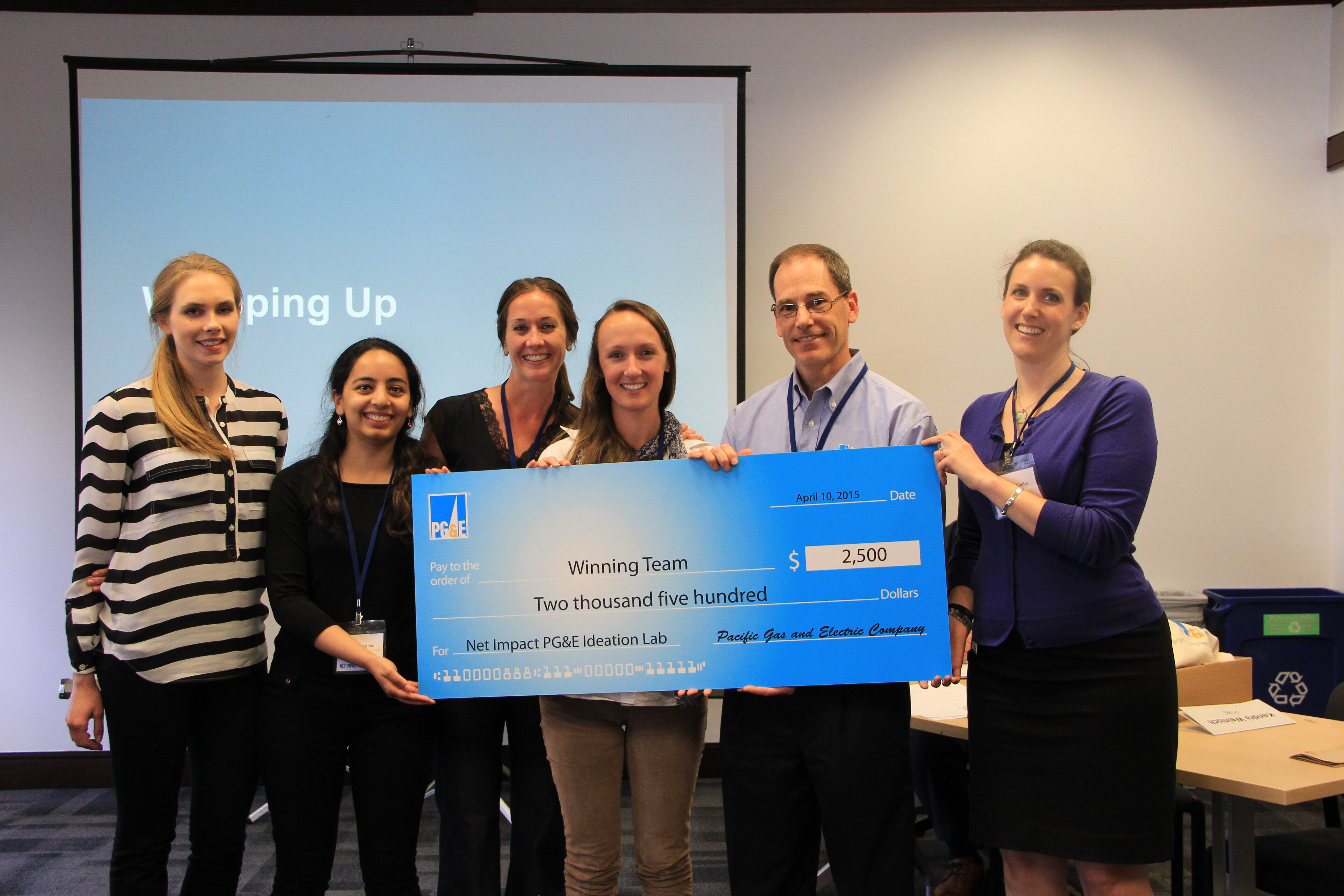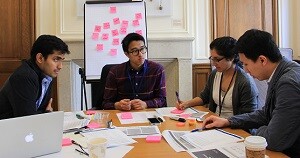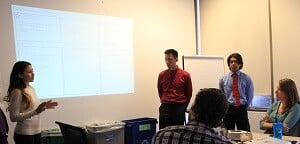3 Ways to Think About Energy Efficiency

Earlier this month, Net Impact and PG&E gathered 60 students from around the Bay Area for a "design thinking" competition where students brainstormed solutions to a current energy efficiency issue. Four teams made it to the finals (representing San Francisco State University, Presidio Graduate School, Santa Clara University and UC Berkeley), and, at the end of the day, the graduate team from San Francisco State University came out ahead and took home $2,500 to support their Net Impact chapter. While the solutions each team designed focused on energy efficiency for small- and medium-sized businesses, their insights and fresh perspectives reached much further. Here are some takeaways from the day that could impact how we all think about our energy usage.
Utilities don’t make money when you turn the lights on
 In California, all electrical utilities have some form of a decoupling program in place, which means that their profits aren’t tied to how much energy customers are using (take a look at this map to see where your state stands on decoupling). So when it comes to finding new ways to save energy, everybody is onboard, including the utility sending you the bill! The winning team, from San Francisco State University, recognized that perceptions about utilities don’t reflect this in-it-together attitude, and they designed a new customer engagement program for PG&E. In their plan, small and medium businesses would have personal relationships with PG&E representatives, who would invite businesses to community events and make personal calls when energy usage was particularly high. Another finalist proposed a community fair that better connected businesses to PG&E resources available to them.
In California, all electrical utilities have some form of a decoupling program in place, which means that their profits aren’t tied to how much energy customers are using (take a look at this map to see where your state stands on decoupling). So when it comes to finding new ways to save energy, everybody is onboard, including the utility sending you the bill! The winning team, from San Francisco State University, recognized that perceptions about utilities don’t reflect this in-it-together attitude, and they designed a new customer engagement program for PG&E. In their plan, small and medium businesses would have personal relationships with PG&E representatives, who would invite businesses to community events and make personal calls when energy usage was particularly high. Another finalist proposed a community fair that better connected businesses to PG&E resources available to them.
California has aggressive energy goals to reach in the next 5 years, and everybody -- from the young couple in the studio apartment to the monolith tech company with a campus of employees and a cadre of servers -- will have to get involved to make those goals a reality. Step one in reaching these goals is to recognize that we’re all on the same team.
Great ideas need great names
 Another group from Presidio Graduate School attempted to tackle the issue of low sign-up rates for energy audits, which save businesses money by identifying the best opportunities for energy savings. The team based their solution on the basic premise that “audit” is a scary word, and very few people are going to willingly sign up for one. Instead, they proposed that we rebrand energy audits as “savings calculators” or “energy assessments” to better underscore the benefits within the name.
Another group from Presidio Graduate School attempted to tackle the issue of low sign-up rates for energy audits, which save businesses money by identifying the best opportunities for energy savings. The team based their solution on the basic premise that “audit” is a scary word, and very few people are going to willingly sign up for one. Instead, they proposed that we rebrand energy audits as “savings calculators” or “energy assessments” to better underscore the benefits within the name.
This solution raises an important point that, although utilities and their customers may agree that cutting energy usage is a good thing, they have a different set of day-to-day issues to deal with, and assess each decision with a different calculus. Ultimately, engaging stakeholders is about more than making great opportunities available to them -- it's about framing those opportunities in a way that makes sense to everyone.
There’s an energy savings program for you! And you, and you, and you…
Most teams who participated in the PG&E Ideation Lab competition designed new ways to engage customers in existing programs, rather than entirely new programs for saving energy. When it comes down to it, there is no shortage of ways for any of us to reduce our energy usage and save money on our energy bill. If you’re interested in saving energy in your home or business, check out the resources available on your utility’s website. Bonus: if you’re in PG&E’s service area and want to help businesses reduce their energy (and make some money for yourself in the process), sign up for Net Impact’s Energy Ambassador Program!




